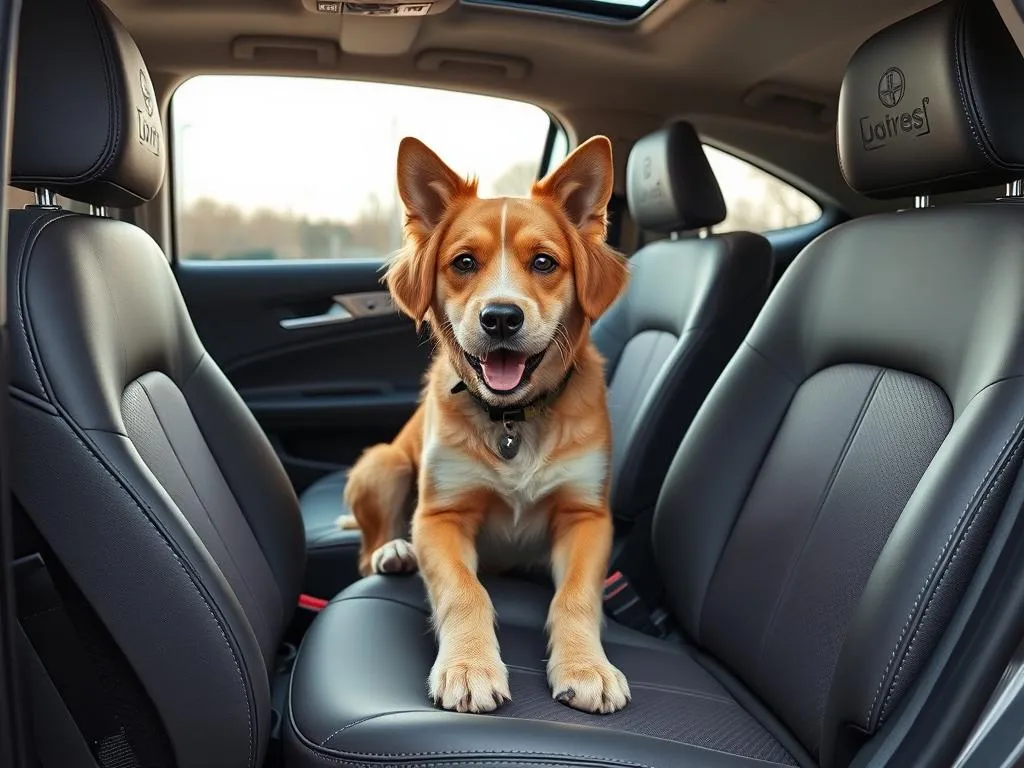
Traveling with your dog can be one of the most enjoyable experiences, but ensuring their safety and comfort during the journey is crucial. Statistics reveal that over 60% of dog owners admit to being distracted by their pets while driving, which can lead to dangerous situations on the road. Dog car seats are designed to provide a safe and comfortable space for your furry friend, reducing distractions and enhancing safety for both pets and passengers. In this article, we will explore the essentials of dog car seats, key features to consider, top product recommendations, training advice, alternative options, and maintenance tips.
Understanding Dog Car Seats
What are Dog Car Seats?
Dog car seats are specialized products designed to secure your pet safely in your vehicle while providing them with comfort. Unlike traditional pet carriers that often confine your dog in a cramped space, car seats elevate your pet, giving them a better view of their surroundings. They often come with safety harnesses and attachments that secure the seat to the vehicle, ensuring your dog’s safety during travel.
Benefits of Using Dog Car Seats
Using dog car seats has several advantages:
- Safety Benefits: These seats help protect your dog in case of sudden stops or accidents. They minimize the risk of injury by preventing your pet from being thrown around the car.
- Increased Comfort: Dog car seats are designed with your pet’s comfort in mind, often featuring padded interiors and secure harnesses that allow your dog to relax during travel.
- Prevention of Distractions: By keeping your dog secured in a designated area, car seats help minimize distractions for the driver, contributing to safer driving conditions.
Legal Considerations
Laws regarding pet travel can vary significantly by region. In some areas, failing to secure your pet in a vehicle can lead to fines or penalties. Understanding these regulations is essential not only for legal compliance but also for ensuring the safety of your pet and passengers. Always check your local laws regarding pet travel to stay informed.
Key Features to Look for in Dog Car Seats
Size and Fit
When selecting a dog car seat, it’s vital to consider the size and fit. Measure your dog from nose to tail and weigh them to determine the appropriate size. A well-fitted car seat will keep your pet secure and comfortable, while an ill-fitting one can pose safety risks.
Safety Features
Look for essential safety features in dog car seats:
- Harness Attachments: A secure harness attachment will help keep your dog in place during travel.
- Crash Test Ratings: Some car seats undergo rigorous crash testing to ensure they meet safety standards.
- Material Durability: Choose seats made from high-quality materials that can withstand wear and tear.
Comfort Considerations
Comfort is just as important as safety:
- Padding and Support: Look for seats with ample padding for your dog’s comfort.
- Temperature Regulation: Opt for breathable materials that help regulate temperature, especially during long trips.
- Ease of Cleaning: Removable covers that are machine washable are a significant advantage for maintaining cleanliness.
Installation and Compatibility
Ensure that the dog car seat you choose is compatible with your vehicle. Check the types of attachments available (seatbelt, anchor, etc.) to guarantee a secure fit in your car.
Top 5 Best Dog Car Seats
Product 1: PetSafe Happy Ride Deluxe Dog Car Seat
- Key Features: This seat includes a sturdy design with an adjustable safety tether, is easy to install, and has a removable, washable cover.
- Pros: Lightweight, comfortable, and suitable for dogs up to 25 pounds.
- Cons: May not be ideal for larger breeds.
- Price Range: $50-$70.
- Customer Reviews and Ratings: Customers praise its ease of installation and comfort but note that it’s best for smaller dogs.
Product 2: KURGO Skybox Dog Car Booster Seat
- Key Features: A unique design that elevates your pet, features a waterproof lining, and includes a safety tether.
- Pros: Fits dogs up to 30 pounds and is easy to clean.
- Cons: The installation may require some adjustments.
- Price Range: $70-$90.
- Customer Reviews and Ratings: Highly rated for its comfort and safety features, with many users appreciating its durable material.
Product 3: Snoozer Lookout II Dog Car Seat
- Key Features: This premium seat has a removable and washable cover, and a unique design that offers a cozy and secure environment.
- Pros: Great for dogs up to 25 pounds, stylish, and provides excellent visibility.
- Cons: Higher price point.
- Price Range: $120-$150.
- Customer Reviews and Ratings: Users love its quality and the fact that their pets feel secure and comfortable.
Product 4: BLOBLO Dog Car Seat
- Key Features: A budget-friendly option with easy installation, safety tether, and soft padding.
- Pros: Affordable, lightweight, and fits well in most vehicles.
- Cons: Not as durable as some higher-end models.
- Price Range: $30-$50.
- Customer Reviews and Ratings: Customers appreciate its value for money but note potential wear over time.
Product 5: Pet Gear Dog Car Seat
- Key Features: This seat features a waterproof liner, removable cover, and safety tether.
- Pros: Easy to clean, fits small to medium-sized dogs, and provides good visibility.
- Cons: Limited size options for larger breeds.
- Price Range: $60-$80.
- Customer Reviews and Ratings: Well-reviewed for its practicality and comfort.
How to Train Your Dog to Use a Car Seat
Introduction to Car Seat Training
Training your dog to use a car seat is essential for their safety and comfort. Proper training can help prevent anxiety and resistance, making travel enjoyable for both of you.
Step-by-Step Training Guide
- Familiarization with the Car Seat: Introduce your dog to the car seat at home. Allow them to explore it and get comfortable with the surroundings.
- Positive Reinforcement Techniques: Use treats and praise to encourage your dog to sit in the seat. Create a positive association with the car seat.
- Gradual Introduction to Car Rides: Start with short trips and gradually increase the duration. Monitor your dog’s behavior and comfort levels.
Common Challenges and Solutions
- Anxiety or Resistance: If your dog shows signs of anxiety, try using calming aids or consult a veterinarian for advice.
- Overcoming Motion Sickness: If your dog experiences motion sickness, consult your veterinarian for possible solutions and consider training them to sit or lie down in the car seat.
Alternative Options to Dog Car Seats
Dog Seat Belts
Dog seat belts provide a safety restraint similar to a seatbelt for humans. They are easy to use, often adjustable, and can be a good alternative for larger dogs. However, they may not offer the same level of comfort and support as dog car seats.
Pet Barriers
Pet barriers create a physical division between the front and back of the vehicle, preventing your dog from moving around. They can be effective for larger dogs but may not provide the same level of security during an accident.
Dog Carriers and Crates
Carriers and crates can be suitable for transporting dogs, especially for travel over long distances. They keep pets secure but may not provide the same comfort as dog car seats. Always consider the safety and comfort needs of your pet when choosing between these options.
Maintenance and Care for Dog Car Seats
Cleaning Instructions
To keep your dog car seat in top condition:
- Recommended Cleaning Products and Methods: Use mild soap and water for spot cleaning. Many seats come with removable covers that can be machine washed for easy maintenance.
- Frequency of Cleaning: Regularly check and clean your car seat to prevent odors and maintain hygiene, especially after long trips.
Inspecting for Wear and Tear
Be proactive in inspecting your dog car seat for signs of damage:
- Signs of Damage to Look For: Check for frayed straps, worn padding, or any structural issues.
- When to Replace a Dog Car Seat: If you notice significant wear or damage, it’s time to consider replacing the seat to ensure your pet’s safety.
Conclusion
In conclusion, investing in a quality dog car seat is essential for the safety and comfort of your pet during travel. With various options available, it’s crucial to consider your dog’s size, safety features, and comfort needs when making a selection. Whether you opt for a booster seat, seat belt, or other alternatives, prioritizing your pet’s safety during travel is a responsible choice that will benefit both you and your furry friend. Happy travels!









